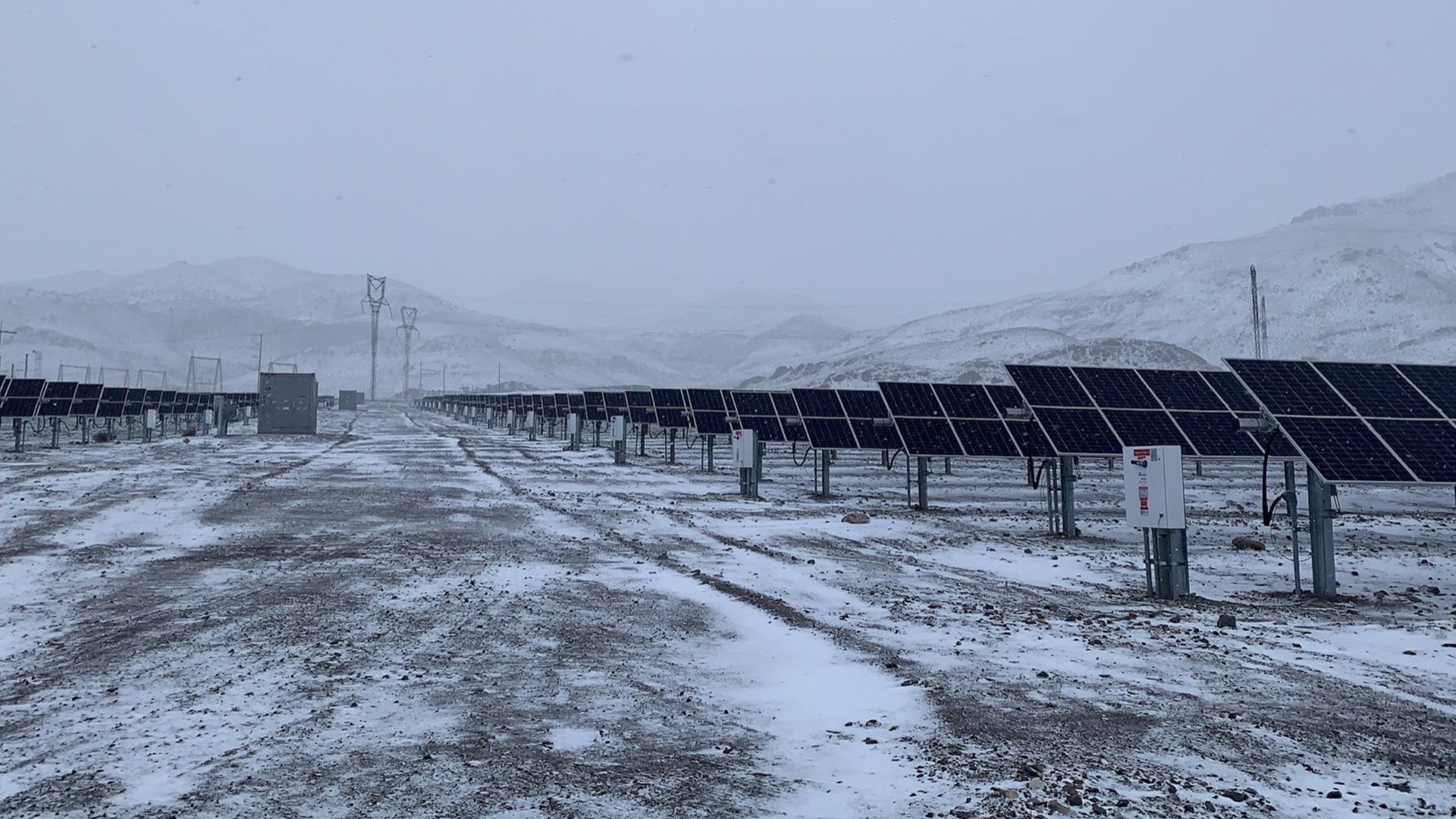
Extreme weather is a clear enemy of utility-scale photovoltaic power plants. A recent trend of increasingly costly extreme wind and hail disasters reinforces this point, wreaking havoc not only with the actual plants in terms of construction timelines and output, but on the availability and rates of commercial insurance for these properties.
In choosing how to fight back, PV plants have two core options among single-axis solar trackers–active stow and passive response.
Active Stow Is a Half Measure in Extreme Weather Risk Mitigation
In crafting a more robust strategy for dealing with extreme weather, particularly during construction of PV plants, active stow is near useless.
The built-in weather mitigation technology in many single-axis trackers can’t be enabled until construction is either complete or nearly so, meaning there are crucial months of construction where these trackers are left completely exposed. This also exposes the construction timeline of the plant, itself, to tremendous setbacks.
And active stow is to blame.
“Trackers that rely solely on active stow risk mitigation need so many things to be connected for that mitigation to take place–anemometers, wireless networks, power supplies, charge controllers, batteries and motors, etc.–and there’s vulnerability to wind and hail during the entire time construction is underway,” said Jon Sharp, Vice President of Strategic Product Marketing at Array Technologies. “It comes down to a simple question–how long can you tolerate that risk exposure? Can lenders, financiers, and insurers tolerate it? The answer is likely no.”
Active stow also buckles in the face of combined wind and hail events, which the National Weather Service says are common. In positioning themselves at high angles to avoid hail damage, active stow-reliant trackers then can’t handle extreme wind, greatly upping the risk of critical damage.
“The process of constructing and operating a utility-scale PV solar plant comes down to a constant equation of risk versus reward,” Sharp said. “Relying on active stow extreme weather mitigation tips the scale in favor of risk.”
There’s a better way.
Patented and Proven Passive Wind Mitigation Delivers Heightened Results
Passive wind mitigation is a much more effective tool for utility-scale PV plant construction, empowering single-axis trackers to better respond to extreme weather events, particularly when they present a combination of wind and hail.
With solutions like Array Technologies’ patented passive, mechanical wind mitigation, the trackers’ weather mitigation is active from assembly of the first row, not the entire plant.
“At Array, we have a philosophy of engineered simplicity. That literally means drastically fewer parts, to the tune of 167 times fewer parts, on average, than a tracker with active stow response. That means no waiting for the installation of thousands of components to get the benefits of a weather risk mitigation strategy,” Sharp said. “Having fewer components also provides clear benefits in uptime and production over the life of a plant. There’s simply fewer things to fail.”
Passive wind mitigation offers a fully automatic, failure-free system–that means no sensors or electricity to rely on. When severe weather arrives, the system simply engages, automatically rotating modules to the safest position for high winds. However, if a rapid response is warranted, software empowers authorized operators to control the entire solar plant to engage that response.
Building On a Foundation of Thorough Extreme Weather Study
The biggest challenge in PV plant weather risk mitigation comes from those events that produce both extreme wind and hail–and the NOAA recorded more than 4,600 such events in 2018, alone.
When trackers are placed in a flat orientation to avoid the damaging effects of wind, hail is presented with a bigger target. When more vertical positions are used to mitigate hail damage, wind has a field day. Array has worked alongside aerodynamic engineering firms and leveraged three decades of experience to help deliver more thoughtful, coherent weather risk mitigation strategies.
Passive risk mitigation is better equipped to handle these dangerous combinations of wind and hail, bringing PV plants greater peace of mind and more flexible options. The Array DuraTrack® HZ v3 has been designed and thoroughly tested to withstand some of the harshest conditions on the planet, and it’s the pinnacle of Array’s commitment to fully integrated, fully automatic wind-load mitigation.
“Array is always committed to genuine partnerships that help each plant project make the most of its footprint and technology,” Sharp said. “We’ve put a lot of thoughtful design into the DuraTrack to help plants develop a more well-rounded approach to weather risk mitigation, but our primary concern is always ensuring you have the information and tools you need to maximize production, uptime and ROI. We share that vision.”
To learn more about how Array is leading the way in weather risk mitigation, contact us today.
Click here for other articles by this author



